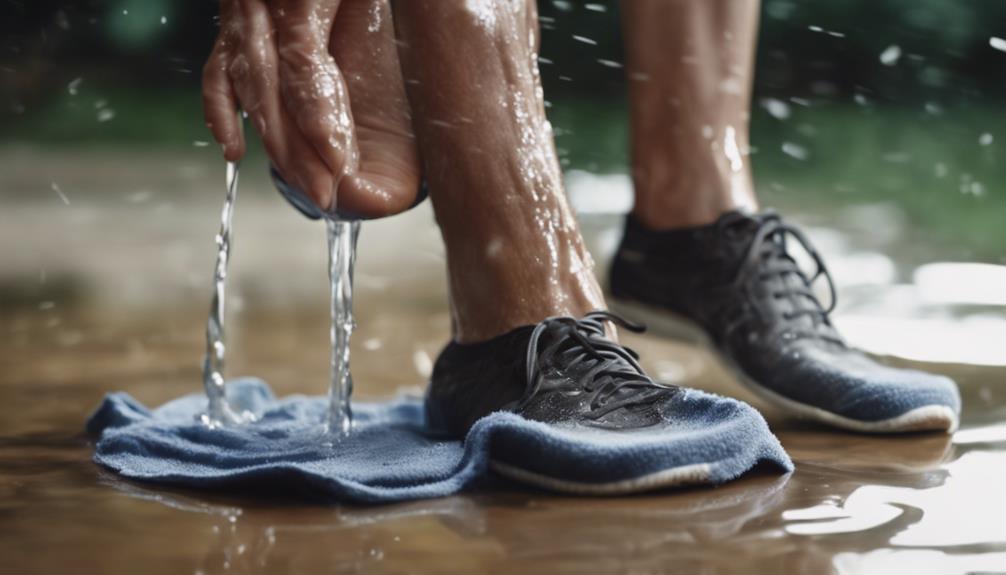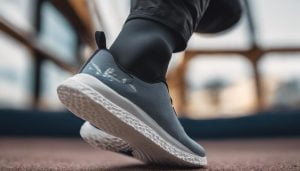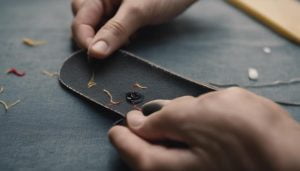This post contains affiliate links. As an Amazon Associate, we earn from qualifying purchases.
Maintaining clean insoles is crucial for both hygiene and comfort, but the process can vary depending on the material and design of the insole. From hand washing with mild soap to disinfecting with vinegar solutions, there are numerous methods to ensure your insoles stay fresh.
However, there is one key aspect often overlooked that can significantly impact the cleanliness and longevity of insoles. By understanding this simple yet effective technique, you can elevate your insole cleaning routine to a whole new level.
Key Takeaways
- Remove insoles for hygiene and odor prevention.
- Use mild soap for effective cleaning and stain removal.
- Disinfect with vinegar solution to kill bacteria and odors.
- Deodorize with baking soda to neutralize odors and moisture.
Removing Insoles for Cleaning
To effectively clean insoles, the first step is to properly remove them from the shoes, whether they are easily removable or glued on. Clean insoles are essential for maintaining the hygiene of both your shoes and feet. Dirty and smelly insoles can be unappealing and may lead to discomfort.
Once you remove your insoles, it's advisable to let them air dry before reinserting them into your shoes. This process not only helps in preventing unpleasant odors but also extends the life of your shoe insoles. For insoles that are glued on, techniques like softening the glue with a hairdryer can aid in their removal for cleaning or repair purposes.
Keeping your insoles clean and deodorized is crucial to maintaining the overall freshness of your shoes.
Washing Insoles With Soap
When it comes to cleaning insoles, a practical method involves washing them with a gentle soap solution to effectively remove dirt and stains.
To clean your insoles, mix lukewarm water with mild soap to create a soapy solution. Gently scrub the insoles with this mixture, ensuring you pay attention to areas with visible dirt or stains.
Thoroughly rinse the insoles to remove any soap residue. After cleaning, let them air-dry completely before placing them back into your shoes.
This drying step is crucial to prevent mold and mildew growth. By following these steps and the manufacturer's recommendations for cleaning insoles, you can maintain their quality and extend their lifespan.
Disinfecting With Vinegar Solution

Using a mixture of 1 part vinegar and 2 parts hot water is an effective method for disinfecting insoles. Soak the insoles in the vinegar solution for a few hours to kill bacteria, remove odors, and prevent moisture buildup. Vinegar, as a natural disinfectant, helps maintain freshness and is a safe disinfectant for most insole materials. Regularly disinfecting insoles with this solution can ensure they remain odor-free.
| Benefits of Using Vinegar Solution | |||
|---|---|---|---|
| Kill bacteria | Remove odors | Prevent moisture buildup | Maintain freshness |
Deodorizing With Baking Soda
After disinfecting the insoles with a vinegar solution, the next step in maintaining freshness is deodorizing with baking soda. Baking soda is known for its ability to neutralize odors by absorbing moisture and eliminating bacteria.
To deodorize insoles, simply place them in a bag with baking soda overnight to allow the powder to work its fresh-smelling magic. This natural and safe method effectively removes unpleasant odors without harsh chemicals.
After letting the baking soda sit, remember to wipe off any excess powder to ensure that all odor-causing particles are removed. Regularly deodorizing with baking soda can help keep your insoles fresh and prevent future odors from developing.
Drying and Reinserting Insoles

To maintain optimal freshness and hygiene, it is essential to ensure that insoles are thoroughly dried before reinserting them into your shoes.
After cleaning the insoles, air dry them in a well-ventilated area to allow for natural drying. Avoid using direct heat sources like a hairdryer or radiator as they can damage the insoles. Placing the insoles in a sunny spot or near a fan can help speed up the drying process.
Ensure the insoles are completely dry before reinserting them into your shoes to prevent mold and odors. By letting the insoles air dry properly, you can maintain comfort and hygiene in your shoes.
Frequently Asked Questions
Can Insoles Be Washed?
Yes, insoles can be washed. The method of cleaning varies based on the material; gel and cloth insoles can be washed with soap and water, while leather insoles require gentle cleaning with a damp rag and soap.
How Do You Get the Smell Out of Insoles?
To eliminate odors from insoles, consider using baking soda to absorb moisture and neutralize smells, vinegar as a disinfectant, freezing insoles to kill bacteria, specialized sprays, or pet odor removers, and placing dryer sheets for a fresh scent.
How Long to Soak Insoles in Vinegar?
Soaking insoles in a water-vinegar mixture for 2-3 hours effectively disinfects and cleans them. The acidity of vinegar breaks down dirt and eliminates odor-causing bacteria. Thorough drying post-soaking is crucial to prevent moisture buildup, ensuring insoles remain fresh and clean.
Can You Use Baking Soda to Clean Insoles?
Baking soda can effectively clean insoles by neutralizing odors, eliminating bacteria, and refreshing them. Sprinkling baking soda on insoles and allowing it to sit overnight can enhance its odor-removing properties. Regular use helps maintain freshness.
Conclusion
In conclusion, proper cleaning and maintenance of insoles is essential to keep them fresh and prolong their lifespan. By following the recommended guidelines for hand washing, disinfecting, deodorizing, and drying insoles, you can ensure that your footwear remains comfortable and odor-free.
Regular upkeep of insoles, along with using clean socks and shoe deodorizers, will help maintain overall foot health and hygiene.



